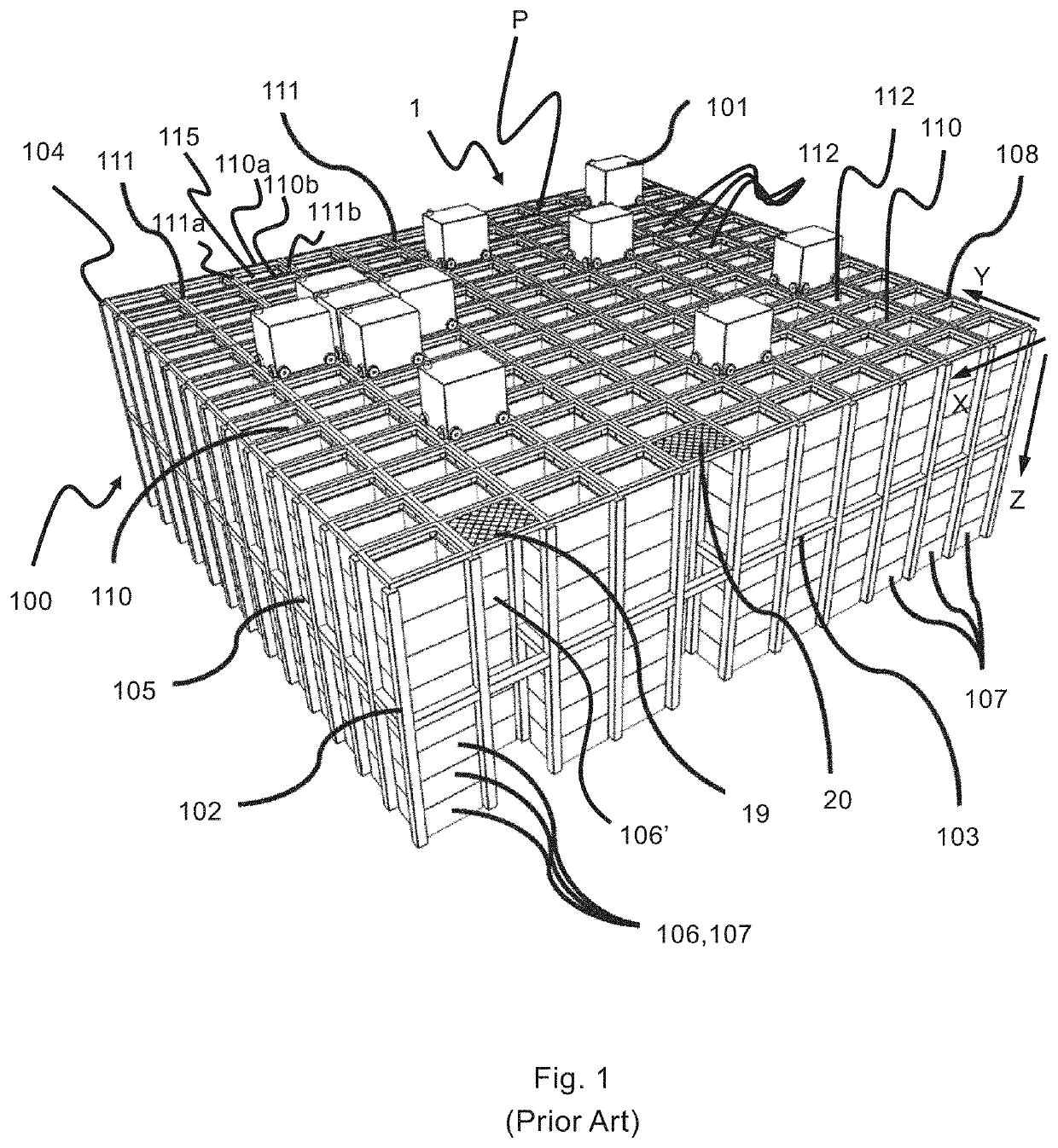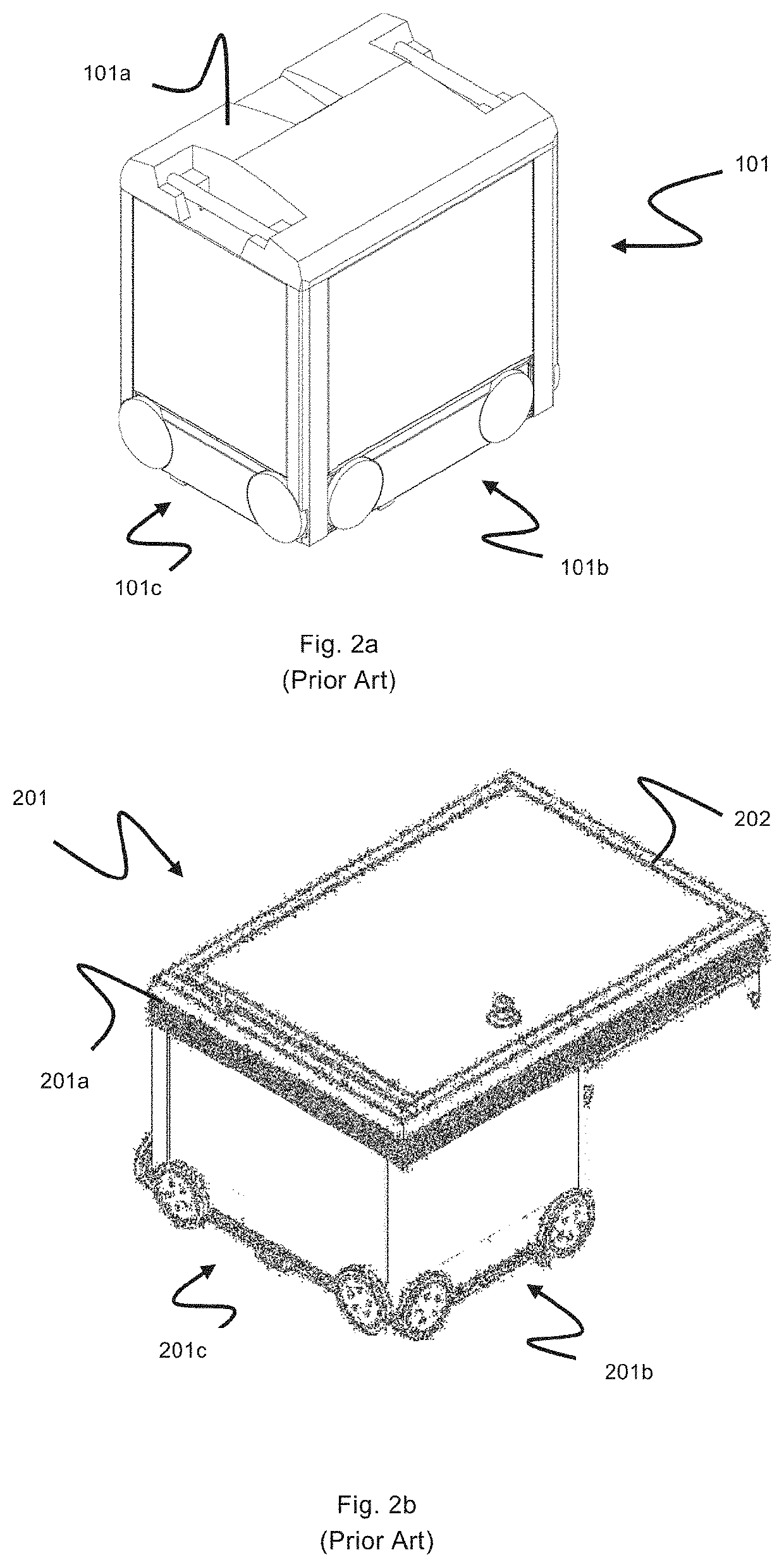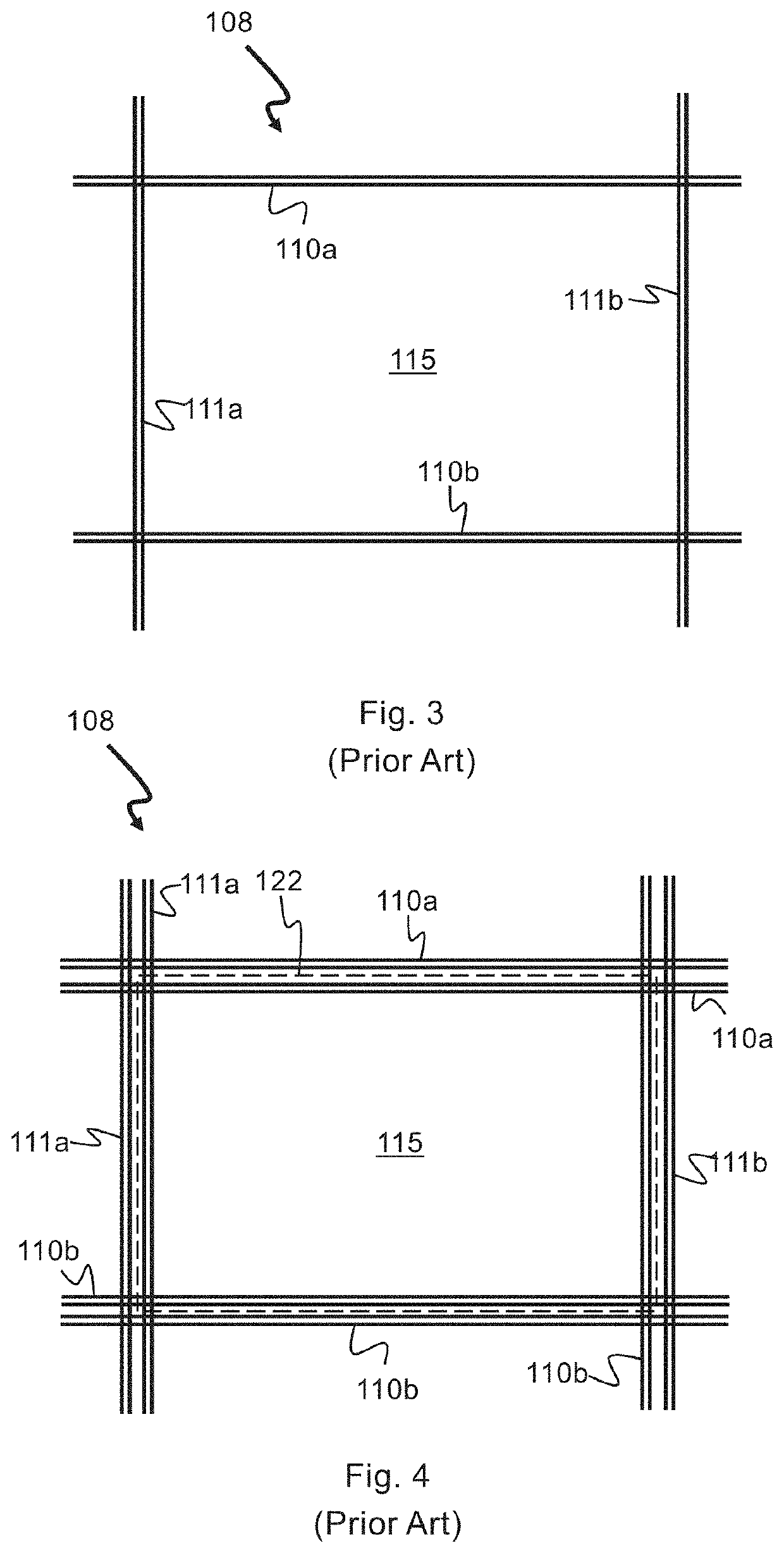A method of operating an automated storage and retrieval system
a technology of automated storage and retrieval system, applied in the direction of stacking articles, process and machine control, instruments, etc., can solve the problems of delayed delivery, inconvenient operation, and inability to know the position of the container handling vehicle with certainty, so as to achieve efficient and smooth movement
- Summary
- Abstract
- Description
- Claims
- Application Information
AI Technical Summary
Benefits of technology
Problems solved by technology
Method used
Image
Examples
Embodiment Construction
[0115]In the following, embodiments of the invention will be discussed in more detail by way of example only and with reference to the appended drawings. It should be understood, however, that the drawings are not intended to limit the invention to the subject-matter depicted in the drawings.
[0116]The framework 100 of the automated storage and retrieval system 1 is constructed in accordance with the prior art framework 100 described above in connection with FIGS. 1-4, i.e. a number of upright members 102 and a number of horizontal members 103, which are supported by the upright members 102, and further that the framework 100 comprises a rail system 108 of parallel rails 110,111 in X direction and Y direction arranged across the top of storage columns 105 / grid columns 112. The horizontal area of a grid column 112. i.e. the area along the X and Y directions, may be defined by the distance between adjacent rails 110 and 111, respectively (see FIGS. 3 and 4).
[0117]In FIG. 1 the grid 104...
PUM
 Login to View More
Login to View More Abstract
Description
Claims
Application Information
 Login to View More
Login to View More - R&D
- Intellectual Property
- Life Sciences
- Materials
- Tech Scout
- Unparalleled Data Quality
- Higher Quality Content
- 60% Fewer Hallucinations
Browse by: Latest US Patents, China's latest patents, Technical Efficacy Thesaurus, Application Domain, Technology Topic, Popular Technical Reports.
© 2025 PatSnap. All rights reserved.Legal|Privacy policy|Modern Slavery Act Transparency Statement|Sitemap|About US| Contact US: help@patsnap.com



